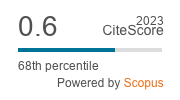Istria in the Belgrade Press 1991 – 1995
DOI:
https://doi.org/10.22586/csp.v49i1.14Keywords:
Istria; Croatia; Politika; Borba; Večernje novosti; Italy; Slovenia; Serbs; Italian minority; Italian property; Treaty of Osimo; territorial pretensionsAbstract
The article deals with the image of Istria during the war in Croatia in the three leading Belgrade dailies: Politika (Politics), Borba (Struggle), and Večernje novosti (Evening News). Politika was the largest Serbian newspaper with a venerable tradition. As such, it was taken over by the regime of Slobodan Milošević and abused for its ends. Borba was the paper of the Communist Party of Yugoslavia. After its disintegration, it became independent until November 1994, when it, too, was put under Milošević’s control. Večernje novosti was an evening paper with a large circulation but limited intellectual aspirations. The differences in reporting about Istria in these three newspapers were due to the differences between the newspapers themselves. Politika was read by the intellectual and political elite with broad interests. This is why the largest number of articles on Istria appeared there (141). Borba used to be a Party paper, but was of good quality. It also had a number of correspondents throughout the country and abroad. Therefore it could also report extensively on Istria: 108 such articles and notes appeared between May 1991 and August 1995. Večernje novosti published only 46 items, their number and quality matching its parochial and nationalist outlook.
The main Istria-related topics dealt with in the three newspapers were the withdrawal of the Yugoslav army from the peninsula, the border problem, the status of the Italian and Serbian minorities, internal politics, Croatia’s relations with Slovenia and Italy and, in that context, the revision of the Treaty of Osimo. A certain number of articles dealt with economic, social or cultural matters, whereas some articles were reprinted or translated from other Croatian and foreign newspapers. Reporting on the above-mentioned topics was in most cases objective. The probable reasons for this were the facts that Istria remained outside of the theatre of military operations, that her leading political party was in constant opposition to the Croatian government that was routinely denigrated in the Serbian press, that Serbian powers-that-be had no direct interest in it (which was not the case in some other parts of Croatia and Bosnia-Herzegovina) and, last but not least, the professionalism of the journalists who wrote the articles.
Although reporting on Istria was constant and mostly objective, it did not cover all segments of life so as to enable the Serbian reader to acquire a comprehensive picture of the peninsula’s development during this period.
Downloads
Published
How to Cite
Issue
Section
License
Copyright (c) 2017 authors and journal

This work is licensed under a Creative Commons Attribution-NonCommercial 4.0 International License.
Copyright holders are the publisher Croatian Institute of History and the authors. Journal of Contemporary History is an Open Access journal. Users are allowed to read, download, copy, redistribute, print, search and link to material, and alter, transform, or build upon the material, or use them for any other lawful purpose as long as they attribute the source in an appropriate manner according to the Creative Commons licence CC BY-NC. The papers published in Journal of Contemporary History can be deposited and self-archived in the institutional and thematic repositories providing the link to the journal's web pages and HRČAK. Journal does not charge article processing charges (APC). The editors assume no responsibility for statements of fact or opinion made by contributors.




